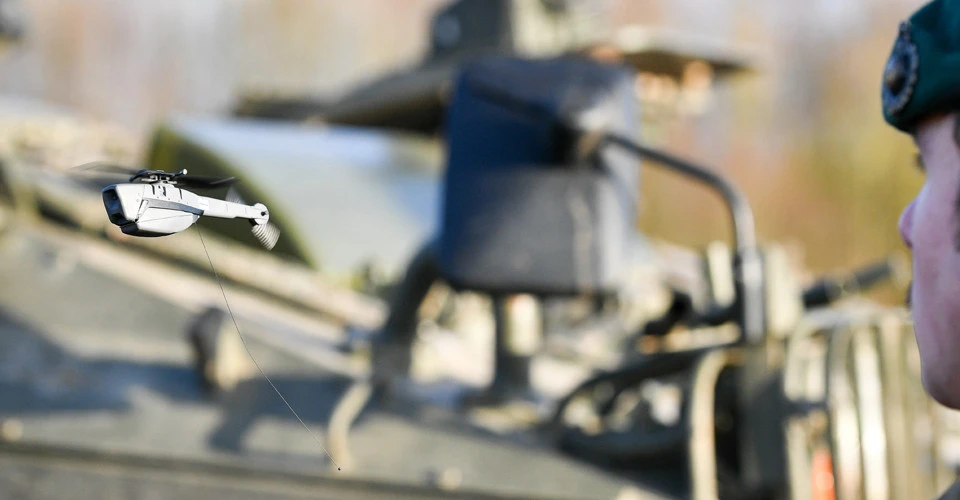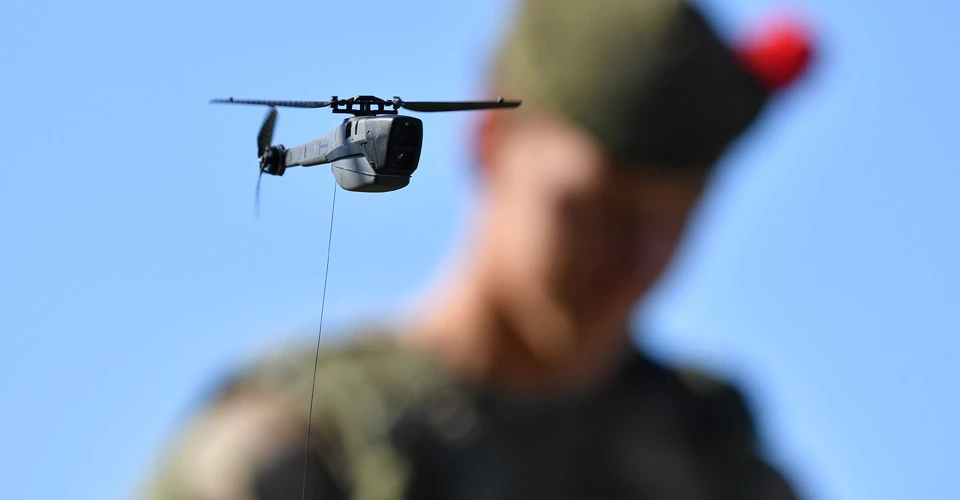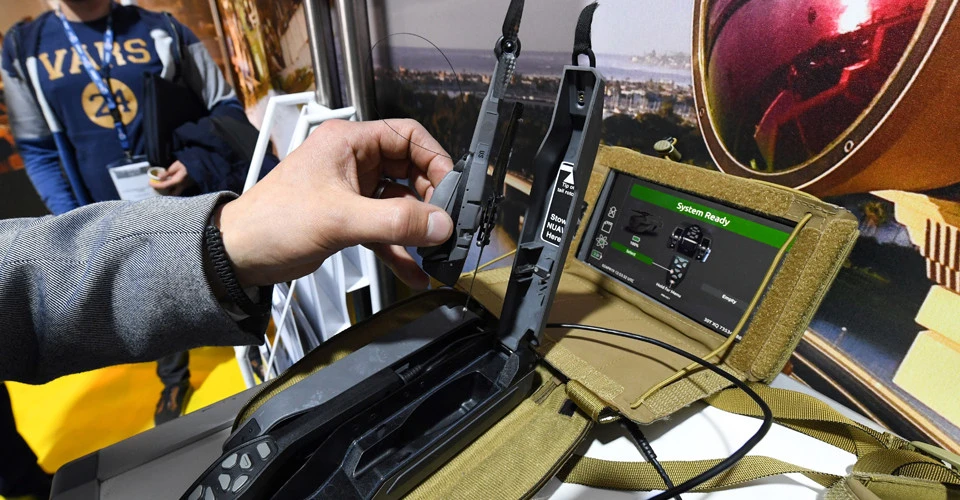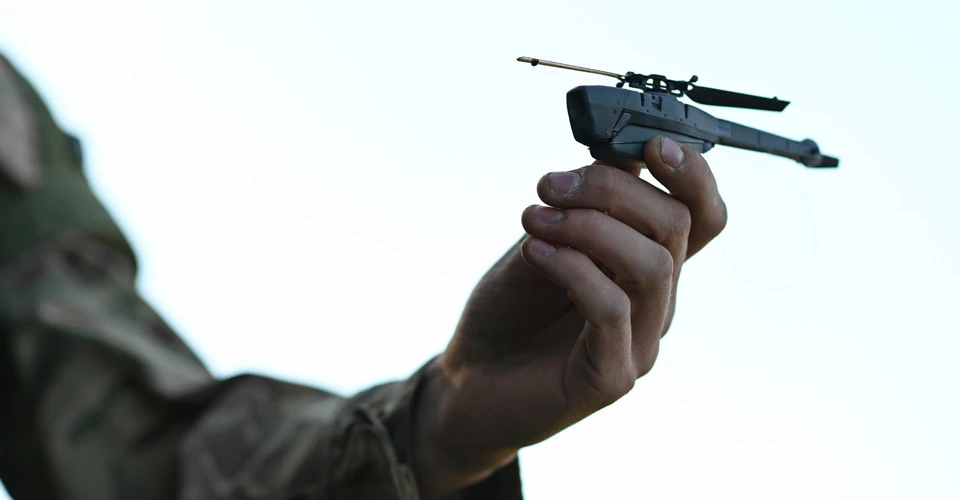
Black Hornet microdrones: what are they and how will they help Ukrainian Armed Forces in urban combat?
The Norwegian Ministry of Defence will provide Ukraine with 1,000 sets of Black Hornet microdrones. The official announcement was made by Norwegian officials on July 12. These drones have unique parameters and this is the type of drone that Ukraine requested to fight the invading Russian forces
Espreso shares the technical features of Black Hornet drones, their unique capabilities, and how microdrones will be used at the front.
What are Black Hornet drones?
The Black Hornet Nano is a military unmanned microlight aircraft developed by Prox Dynamics in Norway in 2007 (mass production began in 2012). This drone is widely used by the US and UK militaries. In particular, the British used the Hornets during Operation Herrick in Afghanistan, when the devices transmitted video and photos from the front line and enemy territory for registration and subsequently returned to the operator. Designed to mimic the muddy-grey walled environments of Afghanistan, the drone was used to peer around corners or over walls and other obstacles to identify any hidden dangers and enemy positions.

Black Hornet microdrone Photo: gettyimages
The main feature of the Black Hornet is its size. The tiny drone fits in a pocket or palm of a hand. It is 10 cm long and only 2.5 cm wide. The tiny helicopter weighs from 18 g (Black Hornet 2) to 32 g (Black Hornet 3).
"The micro-drone is designed to collect intelligence on enemy actions in hard-to-reach areas during combat missions. It is equipped with round-the-clock sensors that allow the operator to detect and monitor enemy troops, vehicles and equipment. It is used to equip tactical units at the 'squad' level and individual soldiers," says a Defence Express article on the Black Hornets.
The device has three cameras; one looking forward, one looking straight down, and the third pointing downwards at a 45-degree angle. Each of the thousand Black Hornet kits that Ukraine will receive contains two drones. So while one drone is flying, the other has time to charge the batteries. 90% of the charge is achieved in 20-25 minutes. By the way, the maximum speed of the drone is up to 36 km/h.

Black Hornet microdrone Photo: gettyimages
Black Hornet specifications
- length 100 mm
- width 25 mm
- rotor span 120 mm;
- Weight (including camera) 18-32 g
- Weight of the kit 1.2 kg
- The maximum speed is 10 m/s;
- Flight duration up to 25 minutes;
- Digital data transmission line 1000+ m line of sight;
- Flight range 2-3 km
- Temperature range -10... +43°C
- GPS or visual navigation by video;
- Autopilot with autonomous and controlled modes;
- Following pre-designed routes;
- Controlled electro-optical cameras;
- Online video and photos
The entire kit weighs just over 1 kg, so the military can easily carry it with them. The range is 1.6 km, and the usual flight altitude is from 10 to 30 metres.
How the Black Hornet works
The set includes a docking station for two drones (it also protects them during transportation), as well as a handheld control panel with a touch screen and a controller. The main system fits easily into a soldier's backpack.
Each Black Hornet has two daytime HD video cameras and a thermal imaging camera. In night mode, Black Hornet is able to improve image quality by using electro-optical systems. This makes it easier for the operator to identify targets, allowing them to separate civilians from an armed enemy, according to a report by Defence Express.

Black Hornet microdrone Photo: gettyimages
The connection to the drone is encrypted using a frequency hopping mode. In case of loss of contact, the system sends the hornet to the place of the last contact with the operator. The Black Hornet has a GPS sensor to coordinate operations out of sight. Interestingly, the drone can also perform tasks in areas where there is no satellite coverage.
The drone is controlled by a controller and monitor. The operator can operate the drone manually, using the controller and watching the hornet using a touchscreen display. It is also possible to set the movement map using semi-autonomous control. In addition, the operator can create a flight profile, set waypoints, and create tasks for the drone at each of these points. For example, the drone can be instructed to stop at certain points and use its sensors to scan 360°.
Recently, Black Hornet can also be controlled by voice. It can even be done in a whisper. This feature will make it easier for soldiers to work, as the operator can give the drone quiet commands without giving himself away. The commands required for the drone are based on phrases commonly used in everyday conversations, without complex terminology.
Advantages and disadvantages of Black Hornet
As for the disadvantages, the Black Hornets have few. The only one is the price of the drones. The complex, which includes a display (which is also a control panel), a charging station and 2 drones, costs up to $60,000. For this money, you can buy more than 20 Mavic 3 Fly More Combo drones, which are used by the Armed Forces of Ukraine most often. Compared to the Mavic, the short flight range is not impressive. It limits the tasks that the Black Hornet can perform (2 kilometres and 25 minutes, while the Mavic's specifications state 6 km and 46 minutes).

Black Hornet microdrone Photo: gettyimages
However, you need to understand that Hornets and Mavics are designed to perform different tasks. A miniature, pocket-sized drone gives the military a significant advantage on the battlefield. It can fly from the street into a building, allowing for an assessment of the situation without endangering the soldier.
Black Hornet is virtually invisible to the enemy due to its size. At the same time, military expert Oleh Katkov emphasises that the small propeller makes almost no noise. The sound of the Black Hornet's flight is no louder than a dragonfly.
"It is almost impossible to hear, let alone shoot down a drone in combat while wearing a helmet," the expert said.
Katkov emphasised that the Black Hornet has many advantages. The entire kit weighs just over a kilogram, can be launched in any conditions (including rainy weather), does not require preliminary calibration, and two cameras allow you to get high-quality video at any time. Another advantage of the micro-drone is its speed - the tiny scout provides information to units very quickly.
The new modular design allows for quick replacement of batteries and on-board sensors, and the operator can quickly adapt one drone for different missions.
In general, learning to fly a microdrone is extremely easy. James Mitchell, a US Marine Corps veteran, said at the Hornet presentation that he learned to fly it after a 20-minute crash course. He called the drone a "personal reconnaissance system".
"Black Hornet can be a life-saver in combat. Commanders no longer need to use personnel to inspect a vehicle that may contain explosives. The first check can be done by a micro drone. All I can think about is why I didn't have this in Afghanistan," said Mitchell.
Black Hornet in Ukraine
Microdrones are exactly the kind of drones that the Ukrainian Armed Forces need at the front today, so Ukraine asked for Black Hornets. In addition, the Ukrainian military received the first batch of Black Hornets last year, when Norway and the United Kingdom handed over $9 million worth of microdrones to Ukraine.
Given the amount announced, in 2022 Ukraine received 150 sets (2 microdrones each). Now we are talking about the supply of 1,000 sets. Given that only a little over 14,000 Black Hornets in various versions have been produced in 16 years, the batch of a thousand sets is amazing.
The quality of the microdrones is highly regarded by the Ukrainian military.
"The operator can control the drone with one hand. Left or right - it doesn't matter! The camera image is sufficient to identify people at a short distance. As for visibility, we flew 10 metres away from a group of soldiers in windy weather and no one noticed us. The copter is extremely quiet! It can be seen against the sky from 50 metres away. Against the background of a forest/wall, etc., it is difficult to see it from 20," the Kruk UAV Operator Training Centre wrote about the Black Hornets
However, they also stressed that Black Hornets are needed by those units that are already equipped with other drones and need microdrones. "The Hornets will definitely not replace larger UAVs - "a completely different class and scenarios of use". The Centre called the Black Hornet a cool, highly specialised drone for reconnaissance of premises, plantings and other areas where a group of soldiers is about to enter.
- News













































